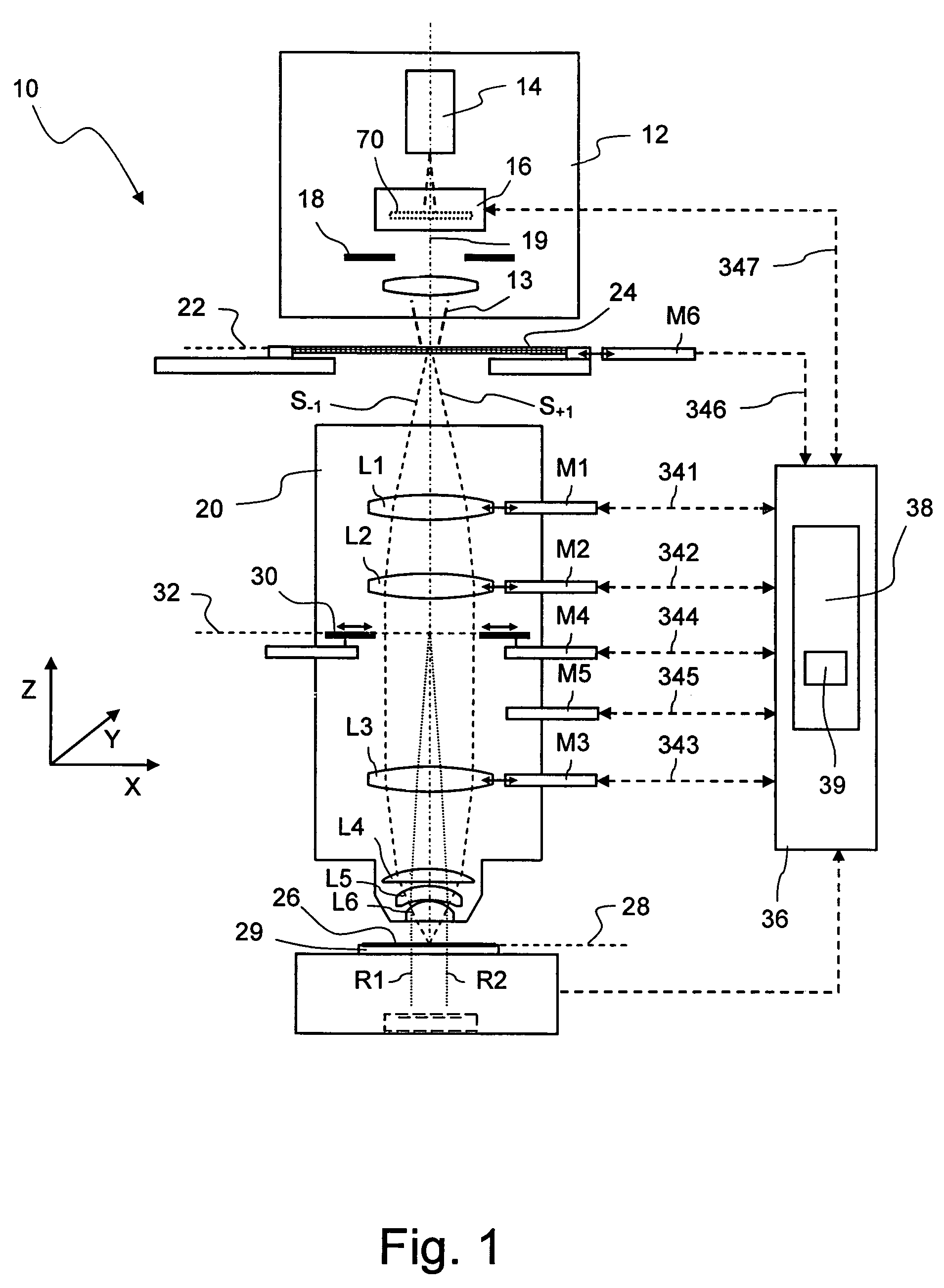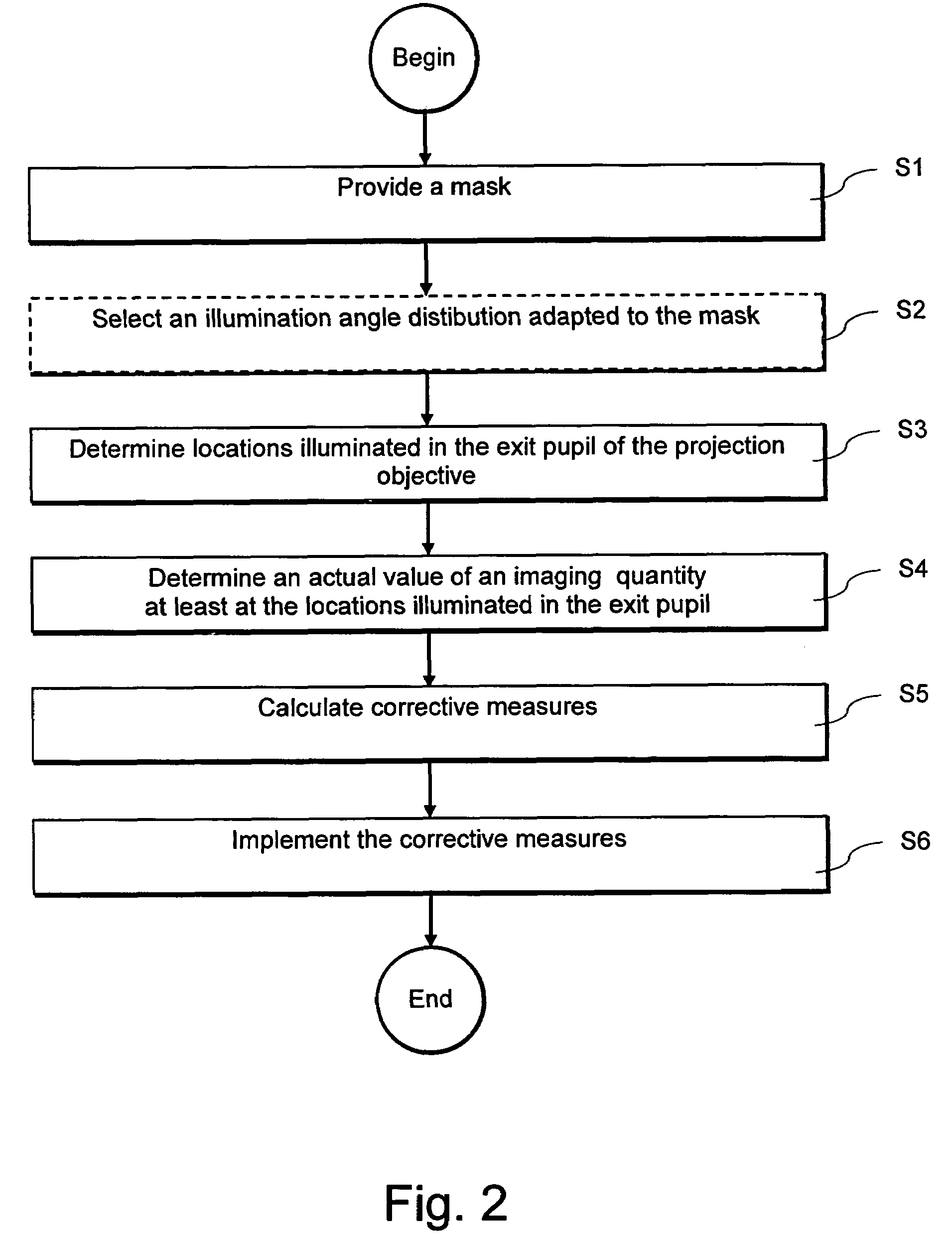Method for improving the imaging properties of a projection objective for a microlithographic projection exposure apparatus
a technology of exposure apparatus and imaging properties, which is applied in the field of improving the imaging properties of projection objective for microlithographic exposure apparatus, can solve the problem that deviations cannot actually have a perturbing effect on imaging, and achieve the effect of improving the imaging properties of projection objective and high accuracy
- Summary
- Abstract
- Description
- Claims
- Application Information
AI Technical Summary
Benefits of technology
Problems solved by technology
Method used
Image
Examples
Embodiment Construction
[0059]FIG. 1 shows a meridian section through a microlithographic projection exposure apparatus, denoted overall by 10, in a highly schematized representation which is not true to scale. The projection exposure apparatus 10 has an illumination system 12 for generating projection light 13, which comprises a light source 14, illumination optics indicated by 16 and a diaphragm 18. The illumination optics 16 make it possible to set different illumination angle distributions. To this end, for example, the illumination system may contain interchangeable diffractive optical elements or microlens arrays. Besides this, the illumination optics 16 may also contain axicon elements, lenses or prisms which are arranged so that they can be displaced along the optical axis 19. Since such illumination optics are known in the prior art, see for example U.S. Pat. No. 6,285,443 A, further details of these will not be explained.
[0060]The projection exposure apparatus 10 also has a projection objective 2...
PUM
 Login to View More
Login to View More Abstract
Description
Claims
Application Information
 Login to View More
Login to View More - R&D
- Intellectual Property
- Life Sciences
- Materials
- Tech Scout
- Unparalleled Data Quality
- Higher Quality Content
- 60% Fewer Hallucinations
Browse by: Latest US Patents, China's latest patents, Technical Efficacy Thesaurus, Application Domain, Technology Topic, Popular Technical Reports.
© 2025 PatSnap. All rights reserved.Legal|Privacy policy|Modern Slavery Act Transparency Statement|Sitemap|About US| Contact US: help@patsnap.com



